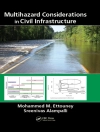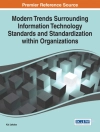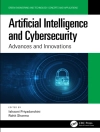Hackers, cyber-criminals, Dark Web users, and techno-terrorists beware! This book should make you think twice about attempting to do your dirty work in the smart cities of tomorrow.
Scores of cities around the world have begun planning what are known as “smart cities.” These new or revamped urban areas use the latest technology to make the lives of residents easier and more enjoyable.They will have automated infrastructures such as the Internet of Things, “the Cloud, ” automated industrial controls, electronic money, mobile and communication satellite systems, wireless texting and networking. With all of these benefits come new forms of danger, and so these cities will need many safeguards to prevent cyber criminals from wreaking havoc.
Most of us will eventually live in smart cities. What are the advantages and the latest design strategies for such ventures? What are the potential drawbacks? How will they change the lives of everyday citizens? This book offers a preview of our future and how you can help prepare yourself for the changes to come.
विषयसूची
Preface.- Chapter 1: The Coming Age of the Smart City.- Chapter 2: The Challenges of Envisioning and Planning a True Smart City.- Chapter 3: The Critical Infrastructure: and Software Needed to Build Smart City.- Chapter 4: Cyber Defense in the Age of the Smart City- Chapter 5: Using Intelligent Data Analytics for Urban Planning and Design – Chapter 6:Protecting Privacy from Internet Abuses in the Smart City – Chapter 7:A 21st Century Smart City.and Mobility – Chapter 8: Smart and Safe Control Systems for the Smart City – Chapter 9: The Smart City Floating Safely on the Cloud.- Chapter 10: Challenges and Opportunities in the Evolution of the Internet of Everything – Chapter 11: Coping with the Dark Web, Cyber-Criminals and Techno-Terrorists in a Smart City.- Chapter 12: How Nations and Smart Cities Can Cope with Cyber-Terrorism and Warfare. – Chapter 13: Flexibility, Vision and Foresight in the Planning for Tomorrow’s Smart City. – Chapter 14: The Smart City — Build It and They will Come. – Glossary. – Index.
लेखक के बारे में
Indu B. Singh, Ph.D., is currently Vice President of Los Alamos Technical Associates (LATA) and head of its Washington, D.C. Operations. He also serves as Executive Director of LATA’s Global Institute for Security Training (GIST). Dr. Singh is considered a pioneer in the designing and implementing smart cities and safe cities around the world as well as urban security. He has published several books on communications, IT systems, and security and is a former faculty member of Rutgers University. Further, Dr. Singh is a former Strategic Director for James Martin and Associates, a global information engineering corporation. Dr. Singh is a recognized expert on solution engineering, health IT, cyber security, and public safety.
Joseph N. Pelton, Ph.D., is the principal of Pelton Consulting International. He is the former Dean and Chairman of the Board of Trustees of the International Space University and Director Emeritus of the Space and Advanced Communications Research Institute (SACRI) at George Washington University. Dr. Pelton was the founder of the Arthur C. Clarke Foundation and remains as the Vice Chairman on its Board of Directors. He was also the founding President of the Society of Satellite Professionals (SSPI) and has been recognized in the SSPI Hall of Fame. He is on the Advisory Board of the World Future Society and frequently speaks and writes as a futurist. Additionally, Dr. Pelton is a member of the International Academy of Astronautics, an Associate Fellow of the American Institute of Aeronautics and Astronautics (AIAA), and a Fellow of the International Association for the Advancement of Space Safety (IAASS).
Both Dr. Pelton and Dr. Singh are well noted from their past writing, lecturing around the world, and professional experience. Together they have lectured in over 30 countries, written over 50 books, and been nominated for and received many awards in writing (including a Pulitzer Prize nomination) and in business and urban planning. In 2015, the coauthors published
Digital Defense: A Cybersecurity Primer with Springer.












